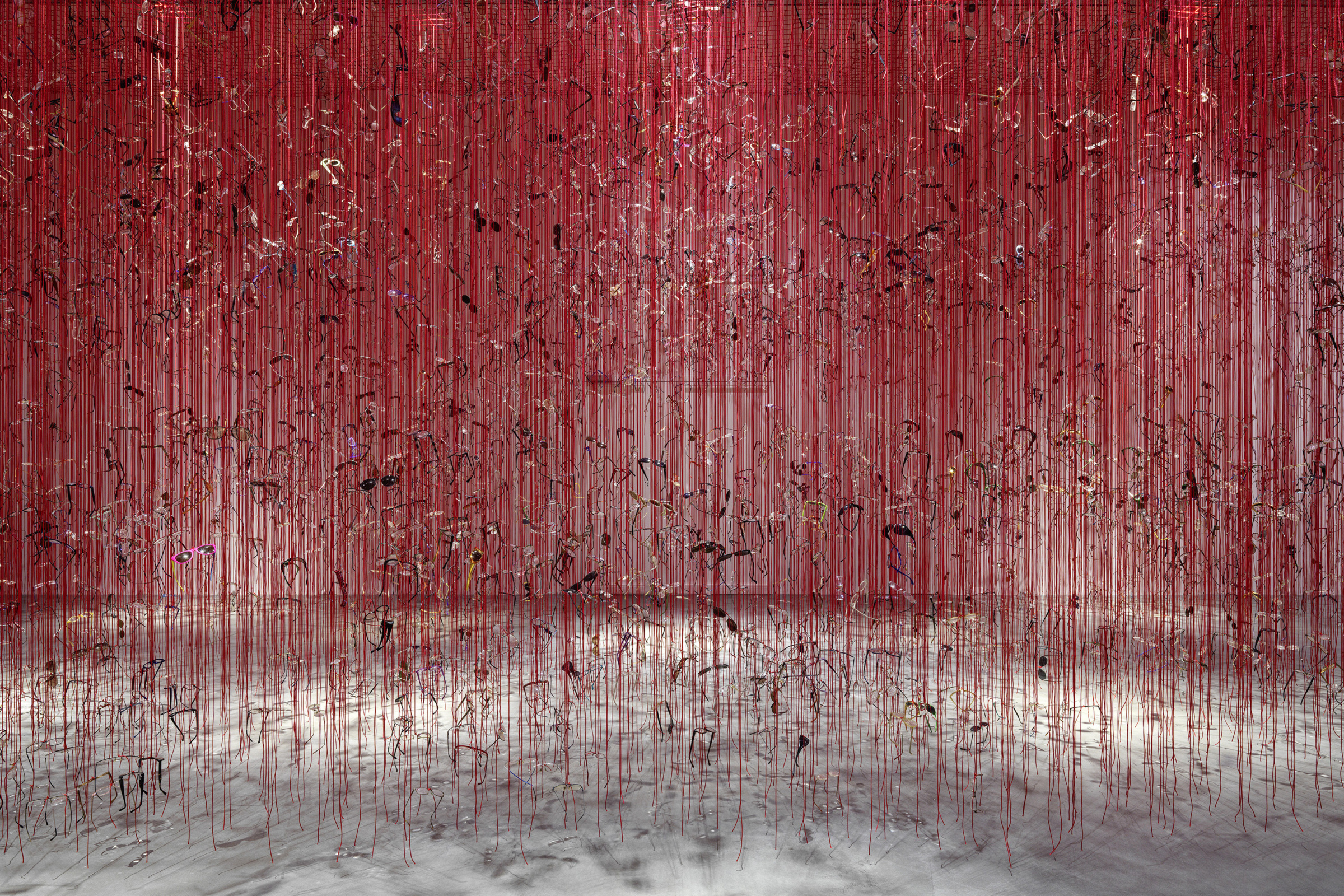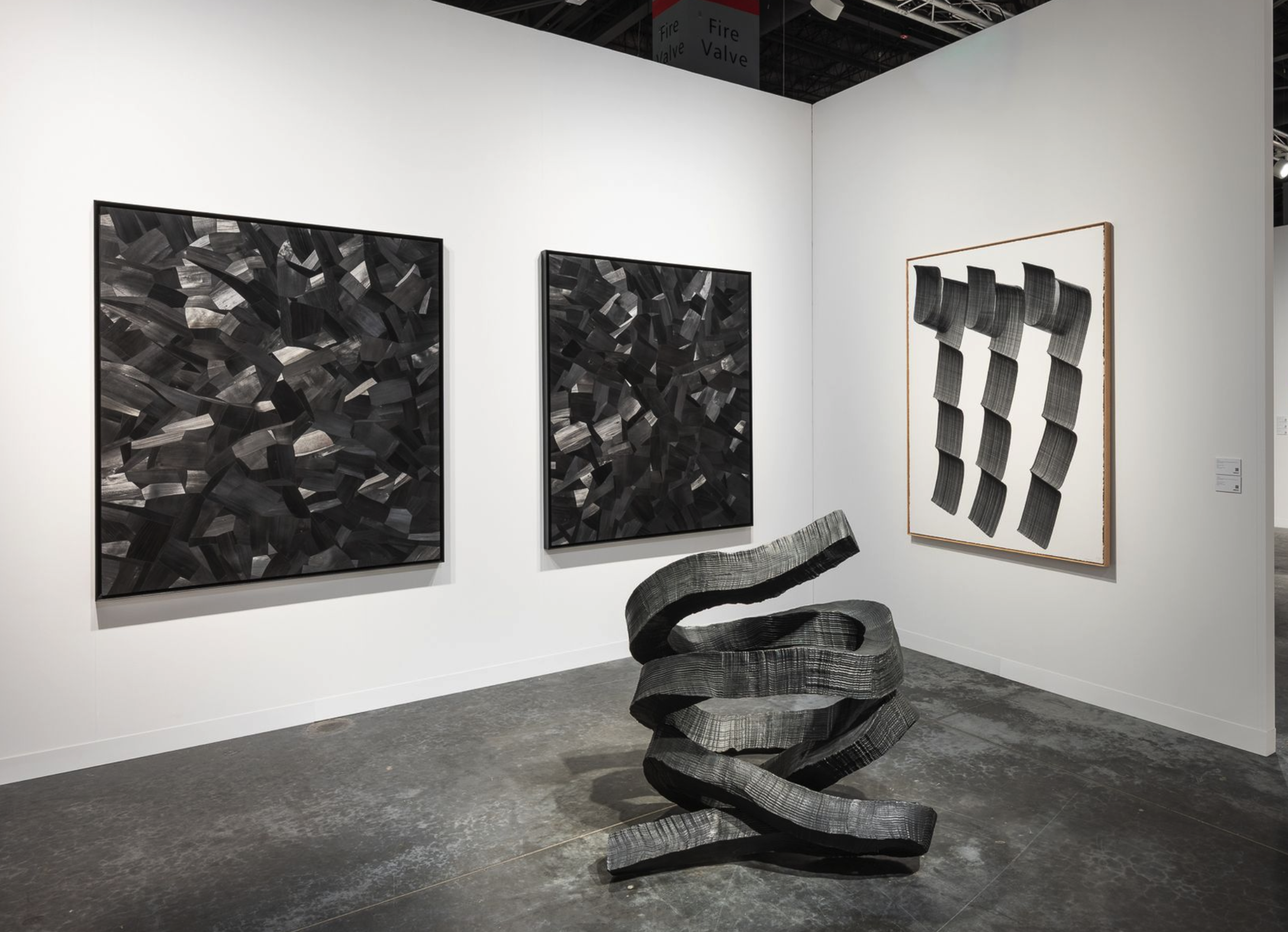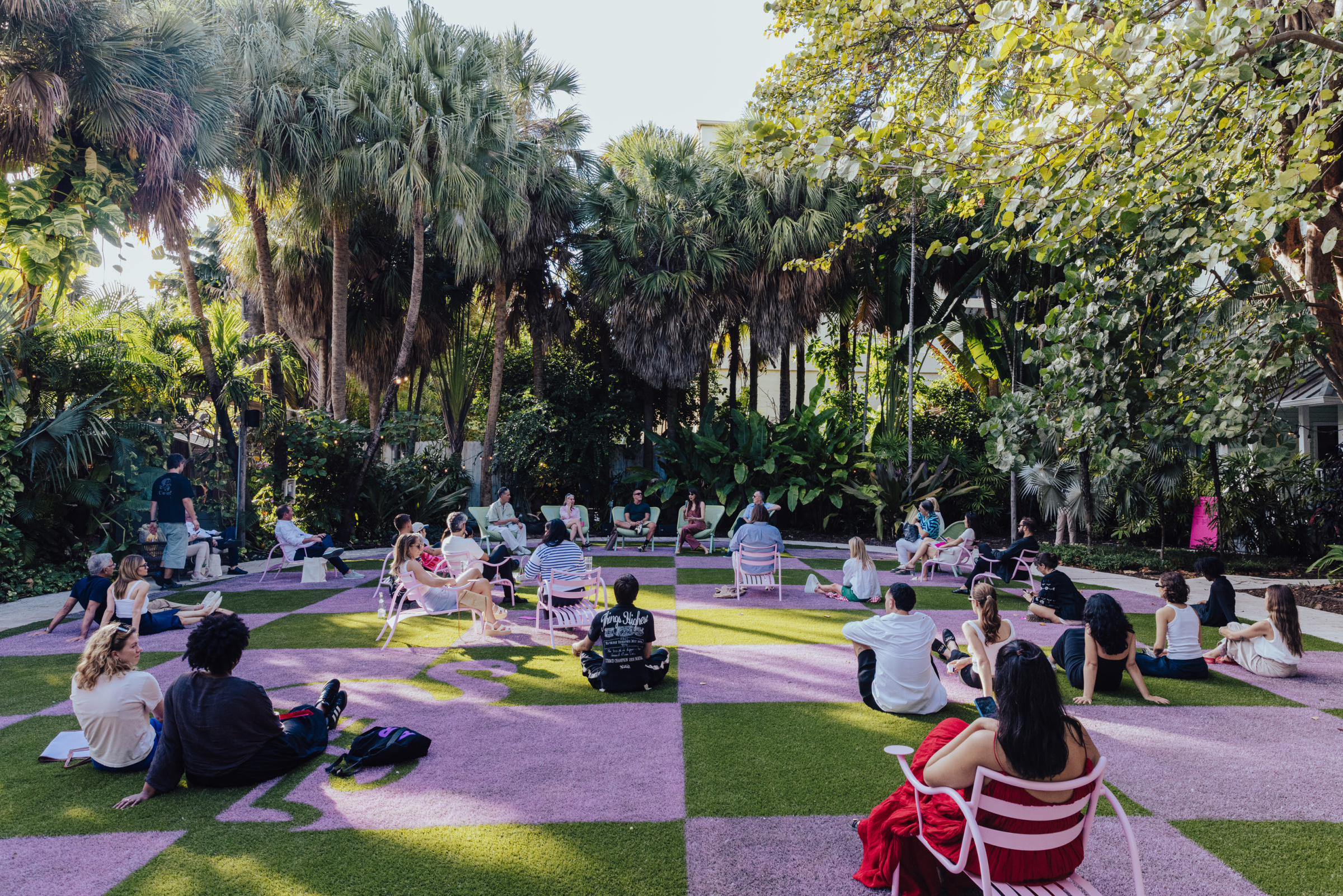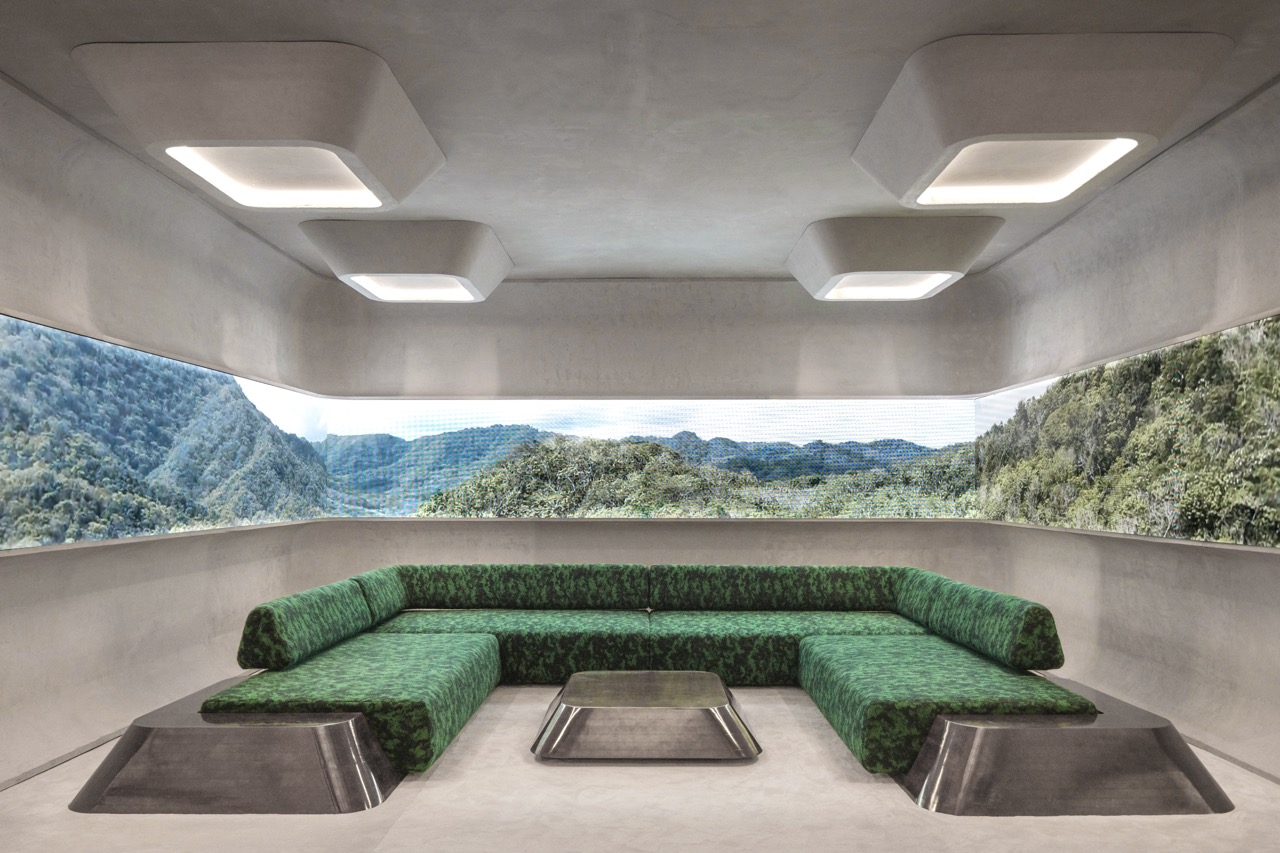A tangled web of red thread hangs at the Swiss gallery, Haus Konstruktiv, dripping like blood. “Eye to Eye,” the first solo exhibition in Zurich for the artist Chiharu Shiota, brings a full scale installation, paintings, works on paper, and sculptures to the institution.
Chiharu, who works across many mediums, is best known for her enormous, site-specific yarn pieces that look like a tangle of blood vessels. Often red or white, the threads stretch from load bearing columns to the rafters. Pulled by Chiharu’s hands, the threads are layered so densely that they diffuse the harsh fluorescent lights overhead. In these woolen worlds, Chiharu embeds objects like keys or shoes, as if they are treasures trapped by a gargantuan spider in a fantastical cave.
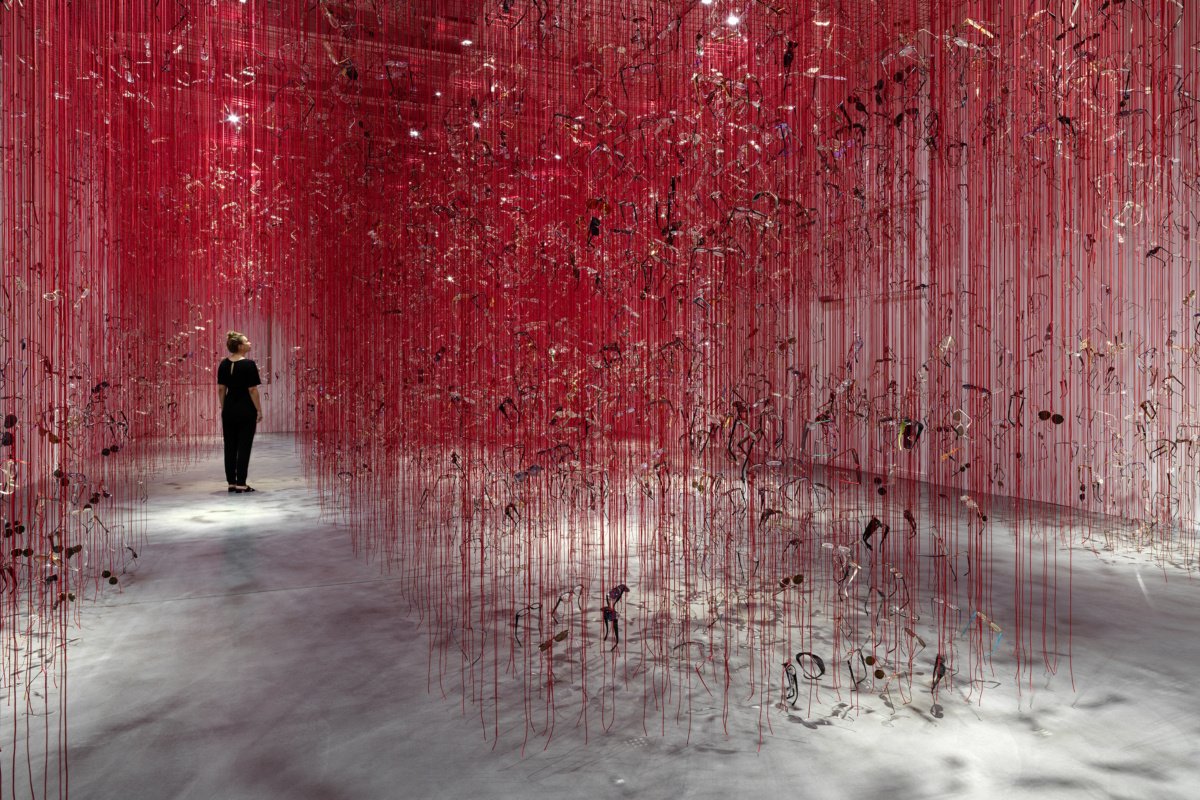
Chiharu Shiota, “Eye to Eye” (2023). Photo by Stefan Altenburger, courtesy of Haus Konstruktiv and ProLitteris, Zuricha
The Berlin-based Japanese artist embeds thousands of pairs of glasses in her newest web, “Eye to Eye,” at Haus Konstruktiv. All the frames are used: the unknown wearers’ memories seep into the installation. Their stories must be invented by the viewer, though hints of personality come through in the color choices. Perhaps a flamboyant fashion designer sketched in the neon green, crystalline frames. A Barbie Girl may have sported the bubblegum pink pair at the beach. A machinist could have operated a drill press with the bulky safety glasses.
Preserving memories is important to Chiharu’s artwork. She has survived multiple bouts of cancer. Having confronted the possibility of death, she is determined to pull internal thoughts out into the open, finding a way to make personal memories and emotions permanent. While her environments are magical, their bloody color and chaotic density can also surface feelings of fear or sadness. This is also Chiharu’s intention.
“Grief will feel like grief to each of us,” Chiharu wrote to Haus Konstruktiv, “pain will be pain and love is love… We are all connected despite the differences. How much can we share the pain of others?”

Chiharu Shiota, “Out of My Body” (2020). Photo by Stefan Altenburger, courtesy of Haus Konstruktiv and ProLitteris, Zuricha
Though much of Chiharu’s work is about interconnection, she has many personal pieces featured in “Eye to Eye,” which try to make sense of the medical procedures she experienced as a cancer patient. In “Out of My Body” (2020), Chiharu’s feet, cast in bronze, are planted to the ground. Red netting hangs above the feet, first connected as a narrow funnel, then spreads outward as explosive patches. They read as Chiharu’s veins and arteries, expanded beyond her body, stretched by doctors, poked by needles, and unfolded to inspect every inch of disease in her body.
Chiharu describes the work poetically. “When I was informed that my cancer had returned, the ground fell beneath my feet. In the hospital, my body was not my body anymore, my body was handed through a system, broken apart and put back together until I was whole again. My body has healed again and now when my feet touch the earth, I feel connected to life.”
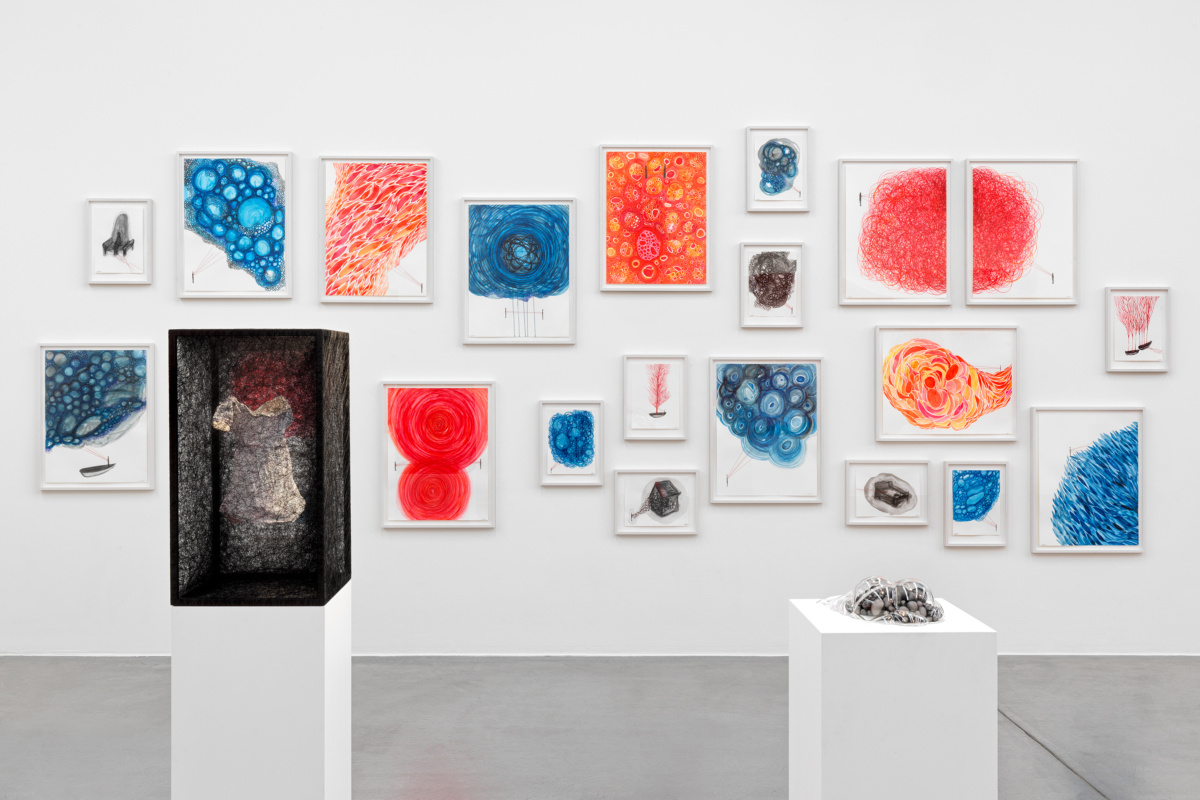
Chiharu Shiota, “Eye to Eye” exhibition view. Photo by Stefan Altenburger, courtesy of Haus Konstruktiv and ProLitteris, Zuricha
We also enter Chiharu’s body through a series of drawings, “Connected to the Universe” (2023). Many focus on large, globus clouds, scribbled with circular marks and gradations in water-based crayon, which are tethered to tiny figures. They are expansive, all-consuming thoughts, bigger than Chiharu’s corporeal form. The forms, delicately attached at the navel, await a snip that would send them into the sky. Would these worry clouds dissipate if detached, or would they travel as a mass unharmed, floating like a balloon up into the atmosphere, breaking through to outer space?
The visceral exhibition will have viewers thinking earnestly about their place in the world, how they exist in it now, and what will be left of them after death. While a haunting subject, Chiharu’s dreamlike artworks create a soothing, inviting space to contemplate such existential questions. “Eye to Eye” runs until September 9.
